The Tuatara Is The World's Fastest Production Car
When Jerod Shelby looked to capture evidence of his SSC Tuatara gunning to new world speed record for production cars-on a public road in Nevada-an iPhone wouldn't cut it. He had to requisition a T33 jet as the camera vehicle" to keep pace with his 1,750-horsepower hypercar.
Between that subsonic jet's gyro-stabilized nose camera, two Guinness record observers, and GPS data from about 15 satellites, the evidence is in: On 10 October, on a 11-kilometer stretch of State Route 160, between Las Vegas and Pahrump, the Tuatara time-warped to an insane top speed of 533 kph-that's 331.15 mph. That blew away the Koenigsegg Agera RS's one-way high of 458 kph, achieved on the same closed-down desert highway in 2017. The Tuatara's two-direction average of 508 kph-the key record, in accordance with rules to account for wind and road-grade changes-easily topped the Bugatti Chiron's 490-kph pace on Volkswagen's Ehra-Lessien test track in Germany.
It's all part of what Shelby dubs the land-based space race." If you're thinking there's a little competition going on, you'd be right.
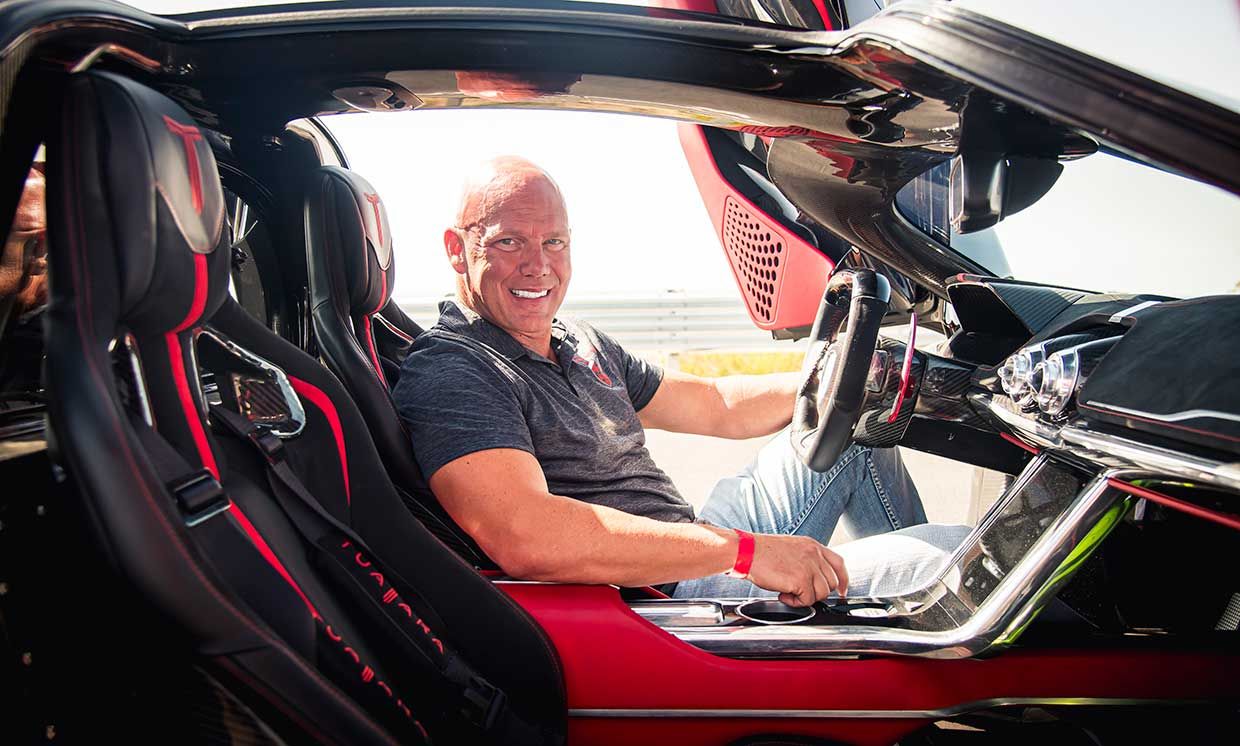 Photo: SSC North America Jerod Shelby's 24-employee company has topped the biggest names in speed, including Bugatti and McLaren.
Photo: SSC North America Jerod Shelby's 24-employee company has topped the biggest names in speed, including Bugatti and McLaren. The Tuatara represents a decade of development for Shelby, a former go-kart racer and mechanical engineer who founded Shelby Supercars (now SSC North America) in his Richland, Washington hometown in 1998. Shelby-no relation to Carroll Shelby of Ford v. Ferrari fame-first captured the auto world's attention with his Ultimate Aero, which set its own record in 2007 by nipping 412 kph.
What's crazy to me is how technology advances," Shelby says. When we broke the world record in 2007, it was so difficult to design a car to surpass the McLaren. Who would have thought that 13 years later, we'd go 75-mph faster, in a car that you could drive to dinner with your wife and valet?"
Valet? If you can afford the Tuatara's US $1.9-million price, you can afford Jeeves, too.
The Tuatara's fast food includes a twin-turbo, 5.9-liter, all-alloy V-8 created by Nelson Racing Engines, the Chatsworth, Calif. company that builds specialized powerplants for racing and the street. The clean-sheet design features a flat-plane crankshaft and a lofty 8,800-rpm redline.
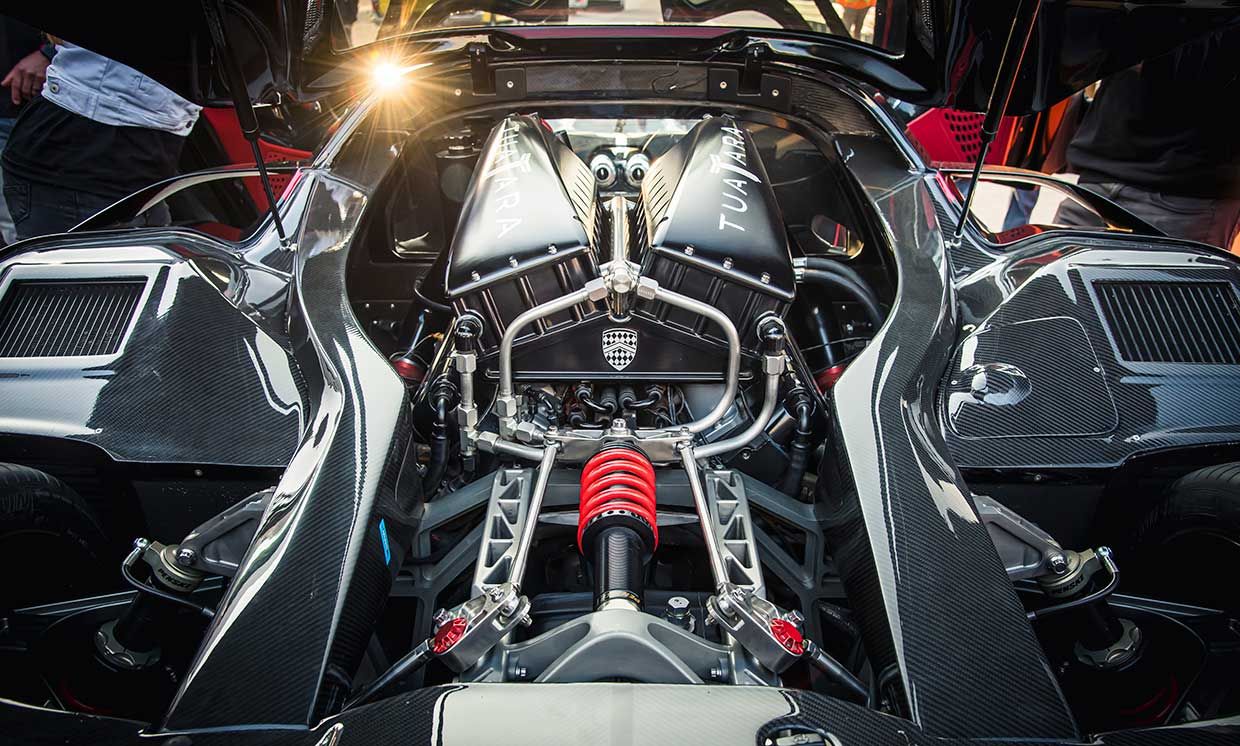 Photo: SSC North America The Tautara's beating heart is a mid-mounted, twin-turbo V-8 that makes 1,750 horsepower on E85 gasoline-ethanol fuel.
Photo: SSC North America The Tautara's beating heart is a mid-mounted, twin-turbo V-8 that makes 1,750 horsepower on E85 gasoline-ethanol fuel. Tom Nelson, the company's founder, says the bespoke engine sounds... glorious.
It's like a mechanical symphony to me," Nelson says. And at the top end is where I really love the sound."
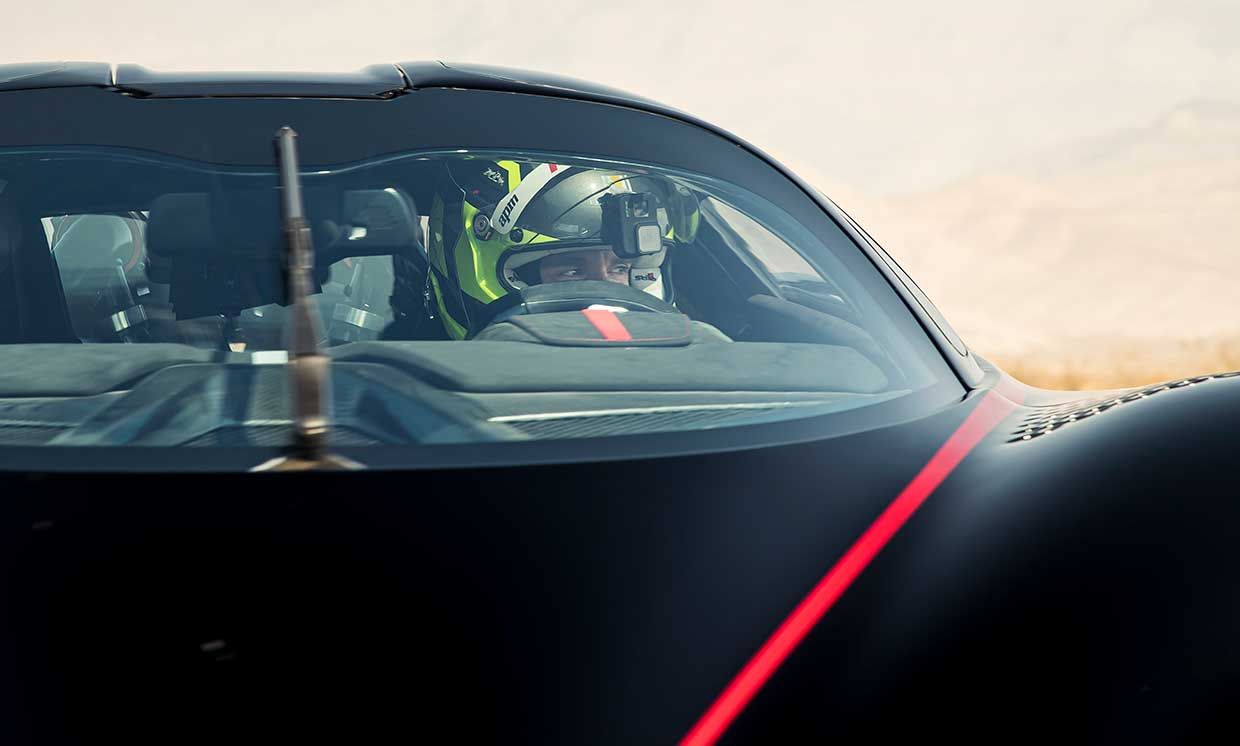 Photo: SSC North America 29-year-old British racer Oliver Webb piloted the Tuatara through tricky crosswind to set the speed record.
Photo: SSC North America 29-year-old British racer Oliver Webb piloted the Tuatara through tricky crosswind to set the speed record. No detail was left to chance for the record run by Oliver Webb, the 29-year-old British pro whose resume includes a European LeMans Series championship. For one, unlike a Bugatti, backed by the global might of the VW Group, Shelby couldn't blow up his roughly $150,000 engine and casually drop in another. Its single engine not only survived a year of rigorous testing and development, but helped set the speed record on its first attempt. For buyers of the seven-figure beast - even if most will never see even 240 kph (150 mph)-durability is a rightful concern. Shelby plans to build 100 copies of the Tuatara, aptly named after a New Zealand reptile whose DNA is among the fastest-evolving of any vertebrate.
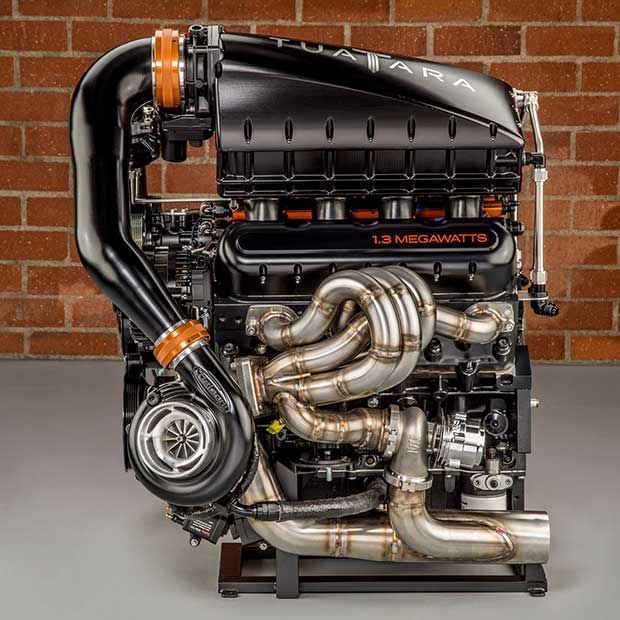 Photo: Nelson Racing Engines The bespoke, flat-crank V-8 spins to 8,800-rpm, with titanium and Inconel components.
Photo: Nelson Racing Engines The bespoke, flat-crank V-8 spins to 8,800-rpm, with titanium and Inconel components. The engine's turbine wheels, exhaust valves and 3D-printed exhaust collectors are formed from Inconel, the nickel-chromium-based super alloy that's used in Formula One racing. Connecting rods are a special grade of titanium. Machined-gold pins connect wiring harnesses, ensuring they don't loosen or corrode. Rotating masses are trimmed by 25 percent versus even Nelson's typical engines, quelling the second-order vibrations large, flat-crank engines are prone to have. An army of sensors, including 11 for exhaust temperatures alone, will put the Tuatara in a protective limp mode if any operating parameter exceeds tolerances by 15 percent. The engine's jewel-like build shined through when Nelson and his team ran the engine well beyond its normal range on a test balancer.
You can spin this crankshaft to 10,000-rpm, put a wine glass on the balancer, and it won't move," Nelson says.
The computerized oversight came in handy in a week of low-speed," roughly 400-kph preliminary tests in Washington state, when the Tuatara's exhaust-gas temperatures shot as high as 1, 077 degrees Celsius (1,970 degrees Fahrenheit).
We couldn't figure out what was going on, and we were going to abort," Nelson says.
The team theorized that fuel ignition was lagging because the ignition coils weren't going to ground quickly enough. A new resistor in the ignition system did the trick.
It was like magic, the exhaust temperatures dropped 300 degrees," Nelson says.
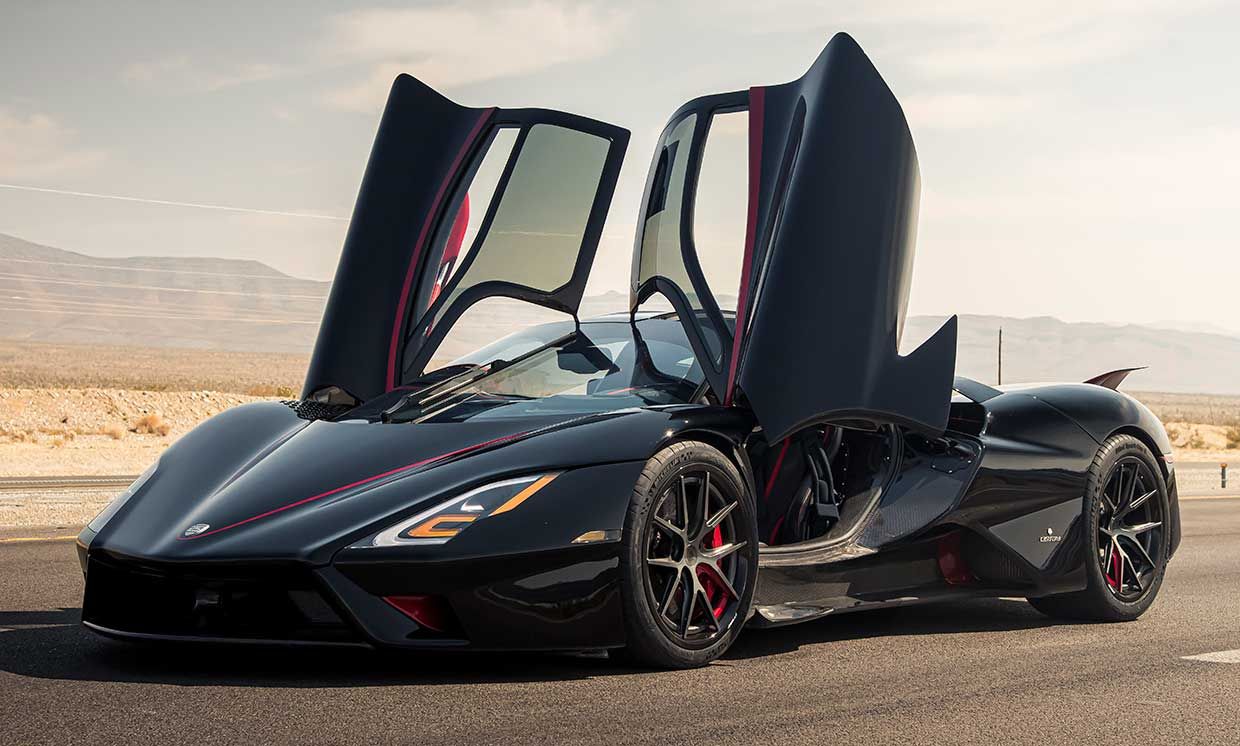 Photo: SSC North America The slippery body, by a former Ferrari designer, claims class-leading coefficient of drag.
Photo: SSC North America The slippery body, by a former Ferrari designer, claims class-leading coefficient of drag. All the power in the world won't help if a hypercar can't overcome monstrous aerodynamic drag as it approaches 500 kph. Jason Castriota, the former Pininfarina designer responsible for several Ferrari and Maserati models, penned the rear-drive Tuatara's slippery shape. That includes a class-best coefficient of drag of 0.279. That compares with a relatively truck-like .340 for the $1 million McLaren P1, one of history's fastest showroom cars. A circulatory system of air channels directing air in and out of the body helps the Tuatara defeat drag, keeps systems cool and generates better than 360 kilograms (800 pounds) of downforce at V-Max. That keeps the car pinned to the ground while maintaining its ideal balance, with 63 percent of aero pressure over rear wheels, from 240 kph to its apogee, at which point the Tuatara was covering 1.5 football fields per second.
Stability became more critical after dawn on 10 Oct., as a slight but perilous crosswind made for a hair-raising record attempt. Forecasts called for winds to soon top the 10-mph safety limit. The mildest ripple beyond that, and Webb would be taking his young life in his hands. Webb's wife was home in Los Angeles, seven months pregnant and too anxious to watch.
With nearly 200 people on site, including a film crew, Webb grew concerned about mounting pressures and expectations. Reality was intruding, quickly: This was a two-lane thread of asphalt through the Mojave, traversed daily by tourists dreaming of a Vegas payday, not a wide-open airport tarmac or racetrack with runoff and barriers for safety.
He said, I'm only going to do one more run; I'm willing to go one more time and give it my all.'" Shelby recalls.
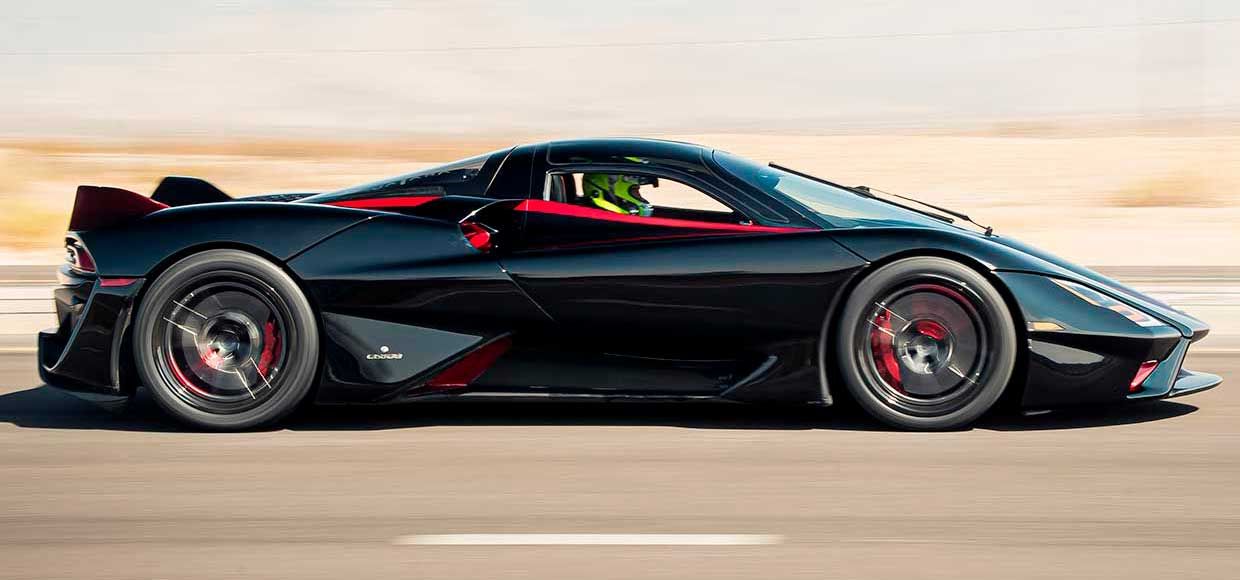 Photo: SSC North America SSC plans to build 100 copies of the record-setting Tuatara, priced from $1.9 million.
Photo: SSC North America SSC plans to build 100 copies of the record-setting Tuatara, priced from $1.9 million. Webb blasted off, focusing eyes as far into the distance as possible, the dotted-white line going solid in his vision as the howling Tuatara punched a hole through the air. Shelby and his two sons jumped into a rental van and raced to the end of the course. They encountered Webb, overcome with emotion, and figured the record bid had failed.
Oliver was sitting on the ground when we pulled up, head in hands, and it didn't look good," Shelby says. He said, I'm done, I'm never doing this again; the wind pushed me right onto the shoulders."
But all of a sudden he looked up, smiled, and said, I saw a really big number on the display, but I had to look away to save the car."
Pulling the data, Shelby saw that big, big number: 331.15 mph. Webb stretched out on his back on the highway, exultant.
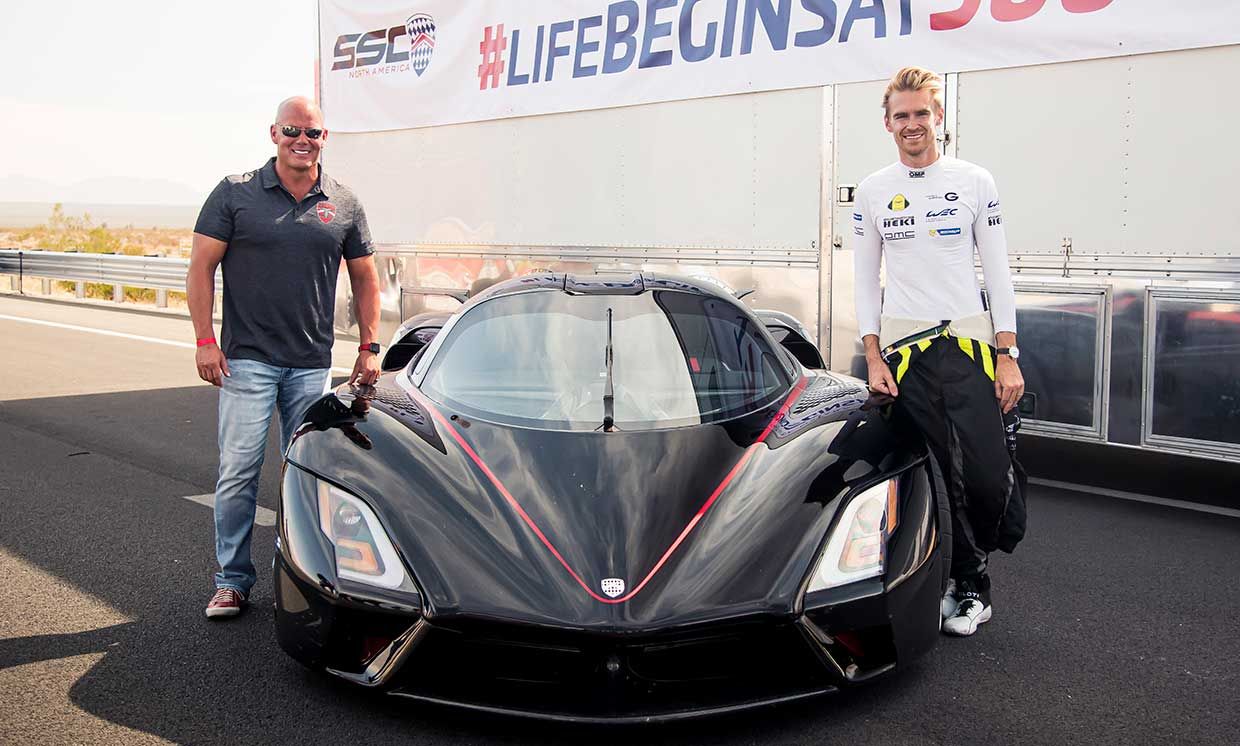 Photo: SSC North America Shelby and Webb set a new high in the land-based space race."
Photo: SSC North America Shelby and Webb set a new high in the land-based space race." He was the fastest man on the planet," Shelby says of Webb. And this isn't the finish line. We're ready to scale up, and look forward to working with customers."
The land-speed battle isn't settled, either. Along with Sweden's Koenigsegg, Texas' John Hennessey may be gunning to top SSC's breakneck pace. They'd better ante up. Nelson says the car was running about 200 horses below its ultimate capacity. Webb, in the swashbuckling style of a born racer, says the Tuatara has more to give.
With better conditions, I know we could have gone faster," Webb says. As I approached 331 mph, the Tuatara climbed almost 20 mph within the last five seconds, and it was still pulling well. The crosswinds are all that prevented us from realizing the car's limit."